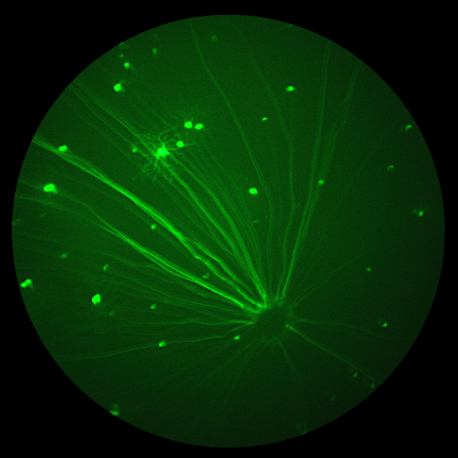In the July edition of Nanomedicine journal, Chemla et al demonstrate a fascinating and novel way to label and track individual photoreceptor precursor cells migrating within the retina with fluorescence and gold nanoparticle tagging using the Phoenix MICRON® and OCT. Many retinal diseases such as age-related macular degeneration and retinitis pigmentosa are characterized by photoreceptor […]
Phoenix MICRON Research Blog
26.08
2019
The Secret to a Perfect Fundus Image
Hint: It Starts with the Animal Angle During our hands-on training, we review animal positioning until every user is completely comfortable. But like most other lab equipment task, it does take some practice. Aligning the animal just right can be the difference between a great and a good fundus image. We’ve put together a […]
17.07
2019
Using the Phoenix MICRON® IV to examine a potential treatment for disrupted retinal vasculature
Many eye diseases, including age-related macular degeneration, diabetic macular edema, cancer growth, and uveitis, involve disrupted blood vessel growth and leakage. Curing the leakage and growth helps modulate and treat the underlying disease. The Phoenix MICRON® IV fundus camera allows for clear visualization of the rodent vasculature in bright field and with fluorescein angiography. Mirando […]
19.06
2019
Developing a unique, novel dry AMD model with the Phoenix MICRON® laser injector
The most common cause of blindness in developed societies, age-related macular degeneration (AMD) robs the victim of the crucially important focused macular vision. While still devastating, wet AMD has a robust mouse model and the treatment option of anti-vascular endothelial growth factor (VEGF) subretinal injections. The Phoenix MICRON® laser allows precise delivery of 532 nm […]
14.05
2019
ARVO 2019: Frogs, Glue and CNV
Another ARVO passed by in a blur of research, scientific discussions, and seeing science friends. If you came by our booth, thank you for swinging by to chat with the Phoenix team. If you didn’t get a chance, please let me know if you have any questions about the Micron system and look for our […]
10.04
2019
Industry Expert Leslie MacKeen Joins Phoenix-Micron as Product Manager
MacKeen brings 28 years of imaging expertise in ophthalmic research and pediatric ophthalmic imaging and will drive product initiatives across both Research and Clinical imaging solutions Pleasanton, CA, USA, April 10, 2019 – Today, Phoenix-Micron (Phoenix), a leading provider of advanced ophthalmic imaging solutions for researchers and clinicians, announces Leslie MacKeen has joined the Company […]




